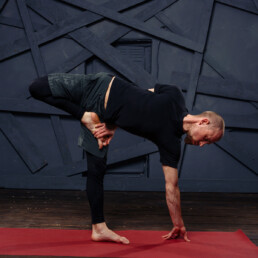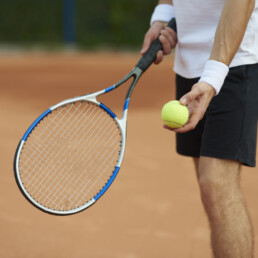FUNCTIONAL RANGE CONDITIONING
Both myself, Erkan (of Evolution Rehab) and our friend Keshava Raghuveer have just had the pleasure of taking part in a very enjoyable and comprehensive Functional Range Conditioning (FRC) seminar taught by Andreo Spina and Dewey Nielsen.
The course involved 2 days of a detailed evidence based interpretation of a form of “Mobility Training” whereby to just call it as such, really doesn’t do justice to the value of the system or the material that had been taught! Here is my interpretation following the 2 day course:
In an environment whereby the nature of many current movement based seminar courses being taught today provide training/rehabilitation strategies involving increasing complexity and global body movements, FRC brings movement training back to a more simple yet fundamentally important concept. The underlying principle behind FRC asks the question of whether an individual possesses complete articular control of the joints in their body.
Andreo then proceeds to spend the following 2 days of the course providing a scientific and practical explanation of what complete articular control essentially means. Within the course, you discover that the health of the joints in your body (and their related tissues) is multifaceted and involves so much more than a question of gross strength, simple flexibility or good ranges of movement. It also involves the ability for your neuromuscular system to have the capacity to volitionally move through, hold and control your joints at their various end ranges of motion.
If ,during the course, you discover that you don’t have the desired range and control within a particular joint in your body (believe me you will find many!!!!), Andreo then teaches you a systematic method to not only restore the inadequate joint range and neuromuscular control, but he also shows you how to, over time, safely condition your joints (and their related tissues) to be able to resist and handle forces at those end ranges of movement. So, if god forbid, you do ever roll onto the edge of your ankle whilst running, the tissues in your ankle will be more resilient to mitigating against potential damage to the joint and its related tissues.
The key point here that any individual should really take note of, is the phrase “Over time!” In a multimedia world of youtube and vimeo, too many people have been sucked into the glamour of feats of breathtaking performance and fancy moves, without any consideration towards the amount of hard work and effort that was required to achieve the movement in the first place. Through scientific explanation Andreo underlines the reality that in order to affect positive, long lasting mobility and tissue adaptation in your body, the process of change requires repetition of the stimulus and good quality work over a period of time that is long enough for the body to be able to physiologically enact changes in the tissues themselves.
“IN ORDER TO GAIN ARTICULAR INTER-DEPENDANCE, ONE MUST FIRST ACQUIRE SUFFICIENT ARTICULAR INDEPENDENCE.”
Another concept brought to the fore in the FRC process is the injury risk that pertains to performing repetitive multi-joint actions without prior acquisition of articular control of the joints involved within the movement tasks. The premise is simple, if one of the joints within a multi-joint action lacks the requisite range and control required for the task, the force demands of that task are passed onto another joint along the movement chain. This is something that may not be particularly desirable as the joints upon which the resultant forces are directed towards may not be structurally suited to handling them.
As a system of learning, FRC is a concept which I both enjoyed and respected as it wasn’t based upon learning a specific method of training but more about understanding a principle. And it is with the principles of FRC that I am able to seamlessly slot the principles into any strength conditioning or rehabilitation program that I provide for my patients.
To paraphrase Mr Spina himself, the goal of FRC is to, “JUST MAKE STUFF WORK NICE!” and if you make all the joints in your body work nice, you have a pretty solid foundation for both maintaining and continuing your movement health.
TENNIS PREPARATION?
For those of you keen followers of Tennis, the first rays of sunshine brings about a return to the outdoor tennis courts and an increase to the amount of time spent refining your ground strokes, serves and volleys. I’m sure with Andy Murray’s recent success in Madrid, this will only serve to intensify your determination and vigor to better yourself on the court!
With an increase in activity on the courts, so does the potential risk for all the aches, pains and niggles that can commonly accompany the added time spent honing your tennis skills. Injuries such as tennis elbow (lateral epicondylitis), shoulder impingement (subacromial impingement), low back pain and jumpers knee (patella tendinopathy), are but a few of the potential ailments that could get in the way of meanful skill progression on the courts.
With any sort of sporting endeavour the first premise that you should always adhere to is that you need to get yourself “Fit to play sport, NOT try to play sport to get fit!” What do we mean by this? Along with the obvious prerequisites of muscular strength and cardiovascular fitness required to play tennis, the other physical requirements you should be asking yourself are:
“Do I possess the necessary level of mobility and control through all of the joints of my body to help ensure that I can safely execute the movements required of me on court?”
One simple example of this is that many people who play tennis do not possess the required level of mobility in their shoulders to be able to hold their arms in a straight line directly above their heads, with their elbows locked straight. When assessing from the side to see if an individual possesses the necessary shoulder range of motion, their biceps should at least be covering their ears or behind their ears. If not, the player is at risk for potential shoulder injury or injury in another part of their body which may have to compensate due to the lack of shoulder mobility. Unfortunately, a good range of shoulder flexibility alone is not enough to ensure that the shoulder is more adapted and resilient to the rigors of swinging a tennis racket. A resilient shoulder with good mobility means that it has to be able to have a good range of movement for the sport of tennis, along with a good level of neuromuscular control which allows the individual to be able to develop and grade forces through their shoulders in multiple directions, particularly in the extreme end range positions. A good test of this mobility would be to stand in good posture whilst trying to balance a swiss ball over your head with a straight arm (elbow locked!) and open palm. Whilst this may not be viewed by many as a particularly functional exercise, it is a good test of whether an individual can develop and responsively grade force development in multiple directions in a position of extreme shoulder flexion. If you wanted to turn this into a strength exercise, try performing this with a swiss ball which has also been filled with a couple of liters of water! By the way, if you try this exercise and you feel compression in your low back, this is a possible indication that you may not have a good level of shoulder mobility!
Another question that could be asked is, “Do I possess the necessary level of postural awareness, balance, coordination, control and timing to be able to safely execute techniques on the tennis court?”
While many of you may be thinking that spending time on the court will sort these problems out, in a way, you are correct. But, in a way, you could also predispose yourself to possible injury if you’ve not grasped the fundamental movement behaviours required to perform many tennis techniques. For example, one of the fundamental movement behaviours is called Vertical Force Management. This is the ability for an individual to be able to accept load through their feet, collectively share the force load through the lower body spring that is their pelvis, hips, knees and ankles and redirect the force into a direction useful to the individual. If there is a breakdown in the load sharing process, the force can be focused into certain parts of the spring such as the knees or ankles. Hence, if the force is focused into the knees or ankles repetitively, breakdown of those parts of the spring could eventually occur. A few common injuries resulting from this could be achillies tendinopathy or patella tendinopathy. Sound familiar?
The following few questions and discussion do not serve to act as a dissuading influence to throw your racket to one side and stop playing tennis. Being a movement chauvinist, I greatly encourage you to happily and fully engage within your tennis pursuits. What I hope to achieve is to sow a few seeds of thought to undertake a simple process of self assessment which will encourage you to take the right steps to help better prepare your body for the rigors of tennis and sport in general. Here at Evolution Rehab we are fully equipped to help you with that assessment process. Please feel free to ring or email us if you have any questions and we will be able to guide you in the right direction.

